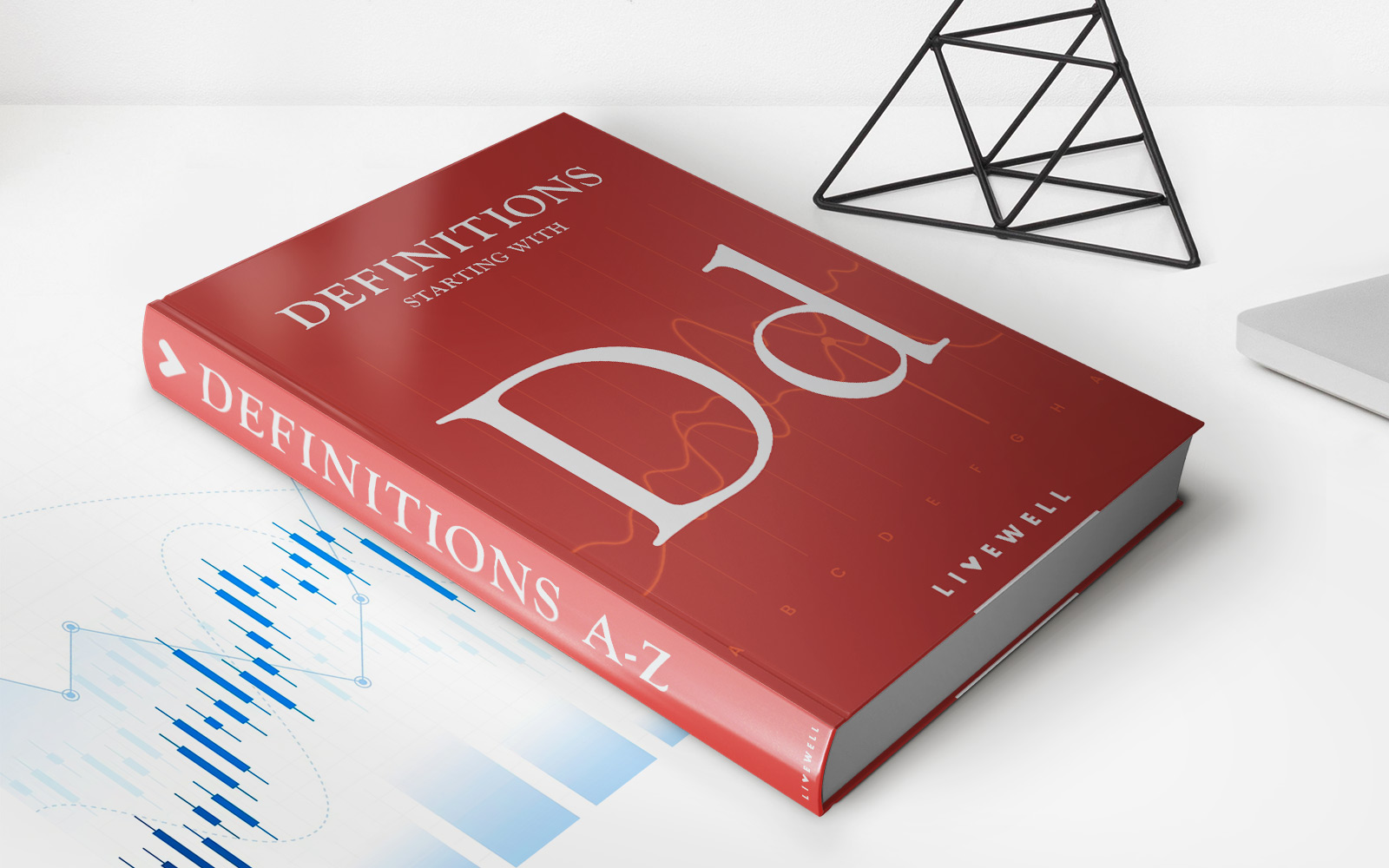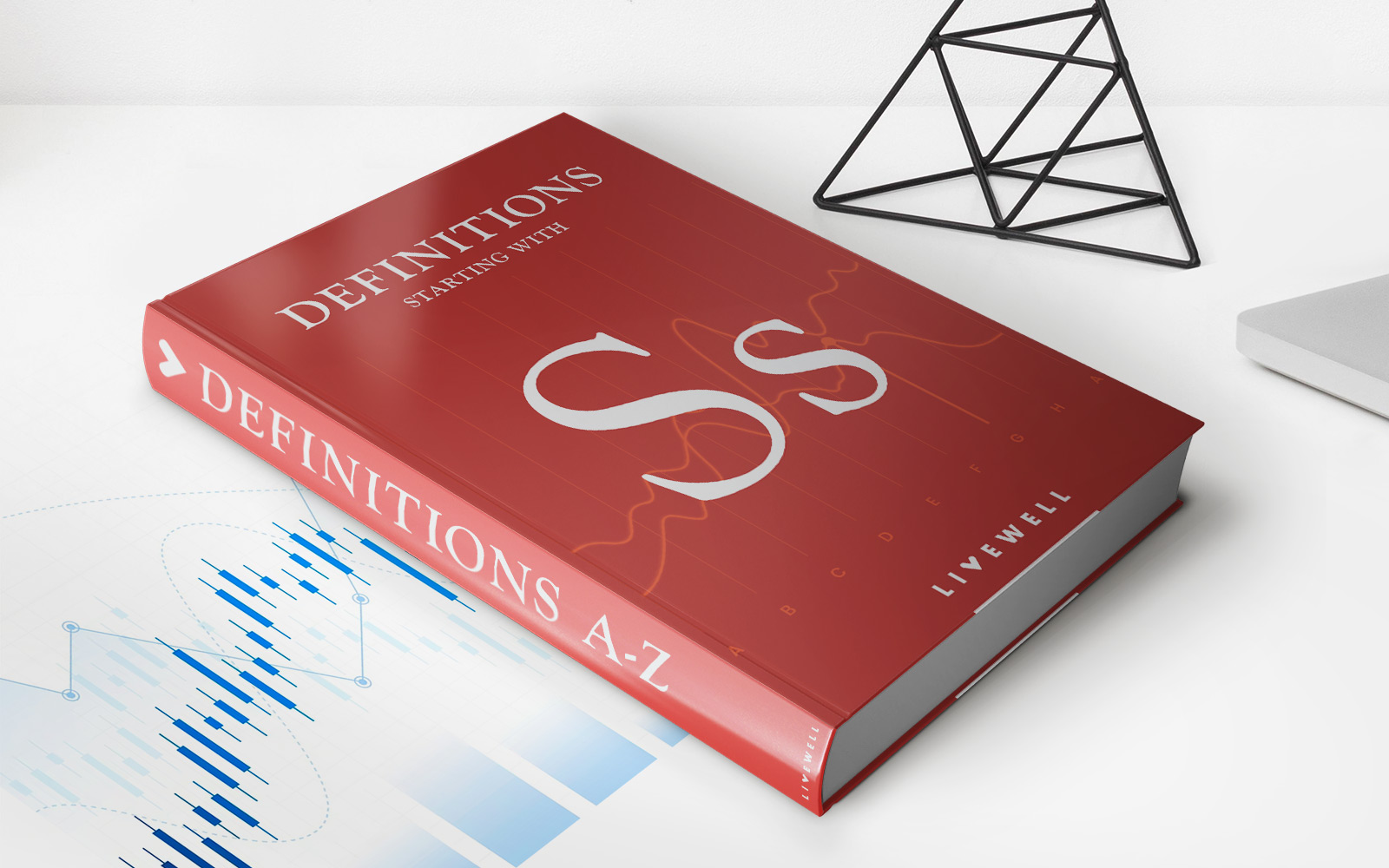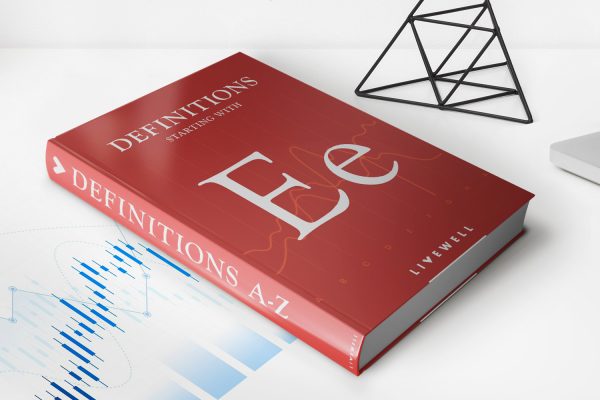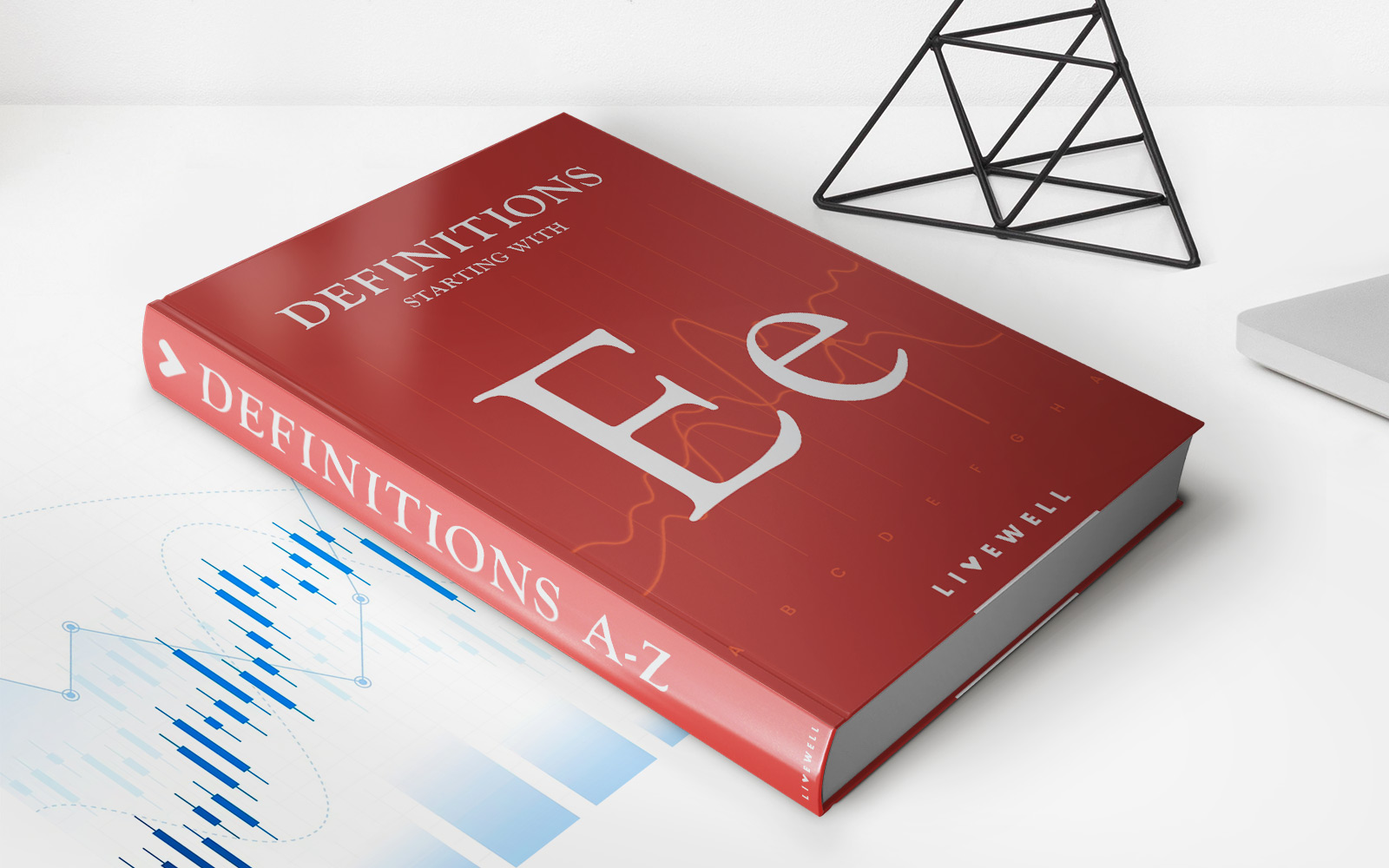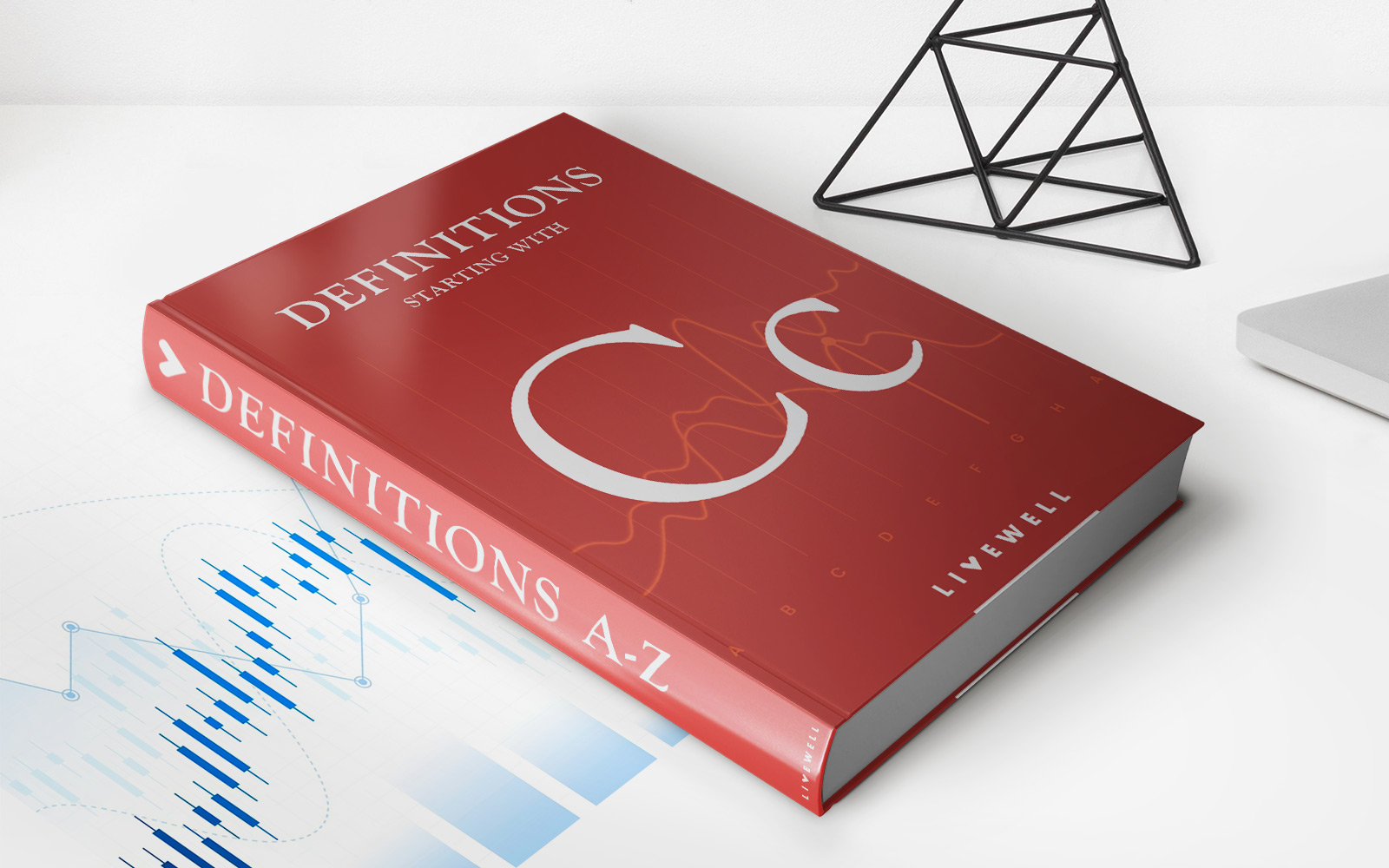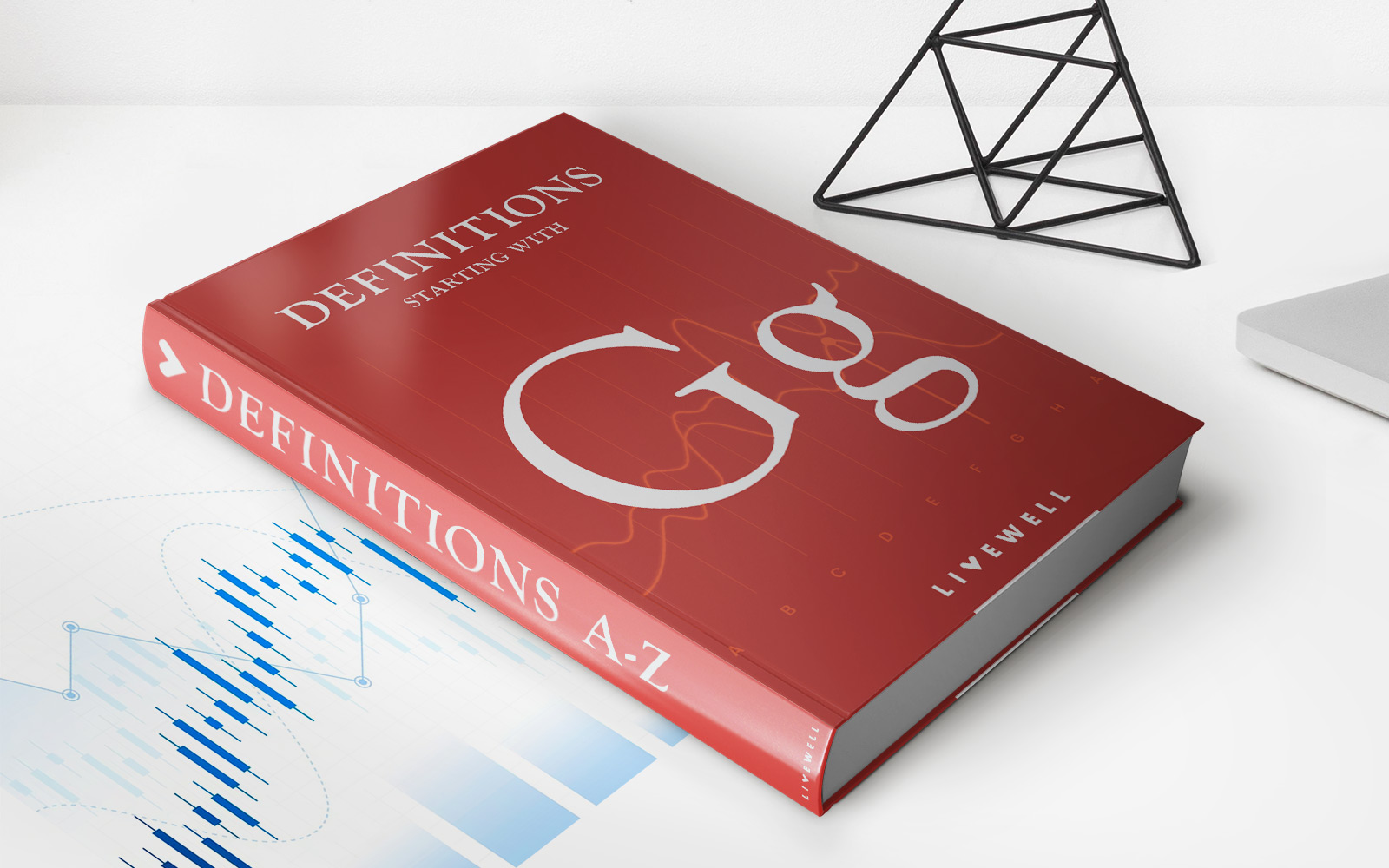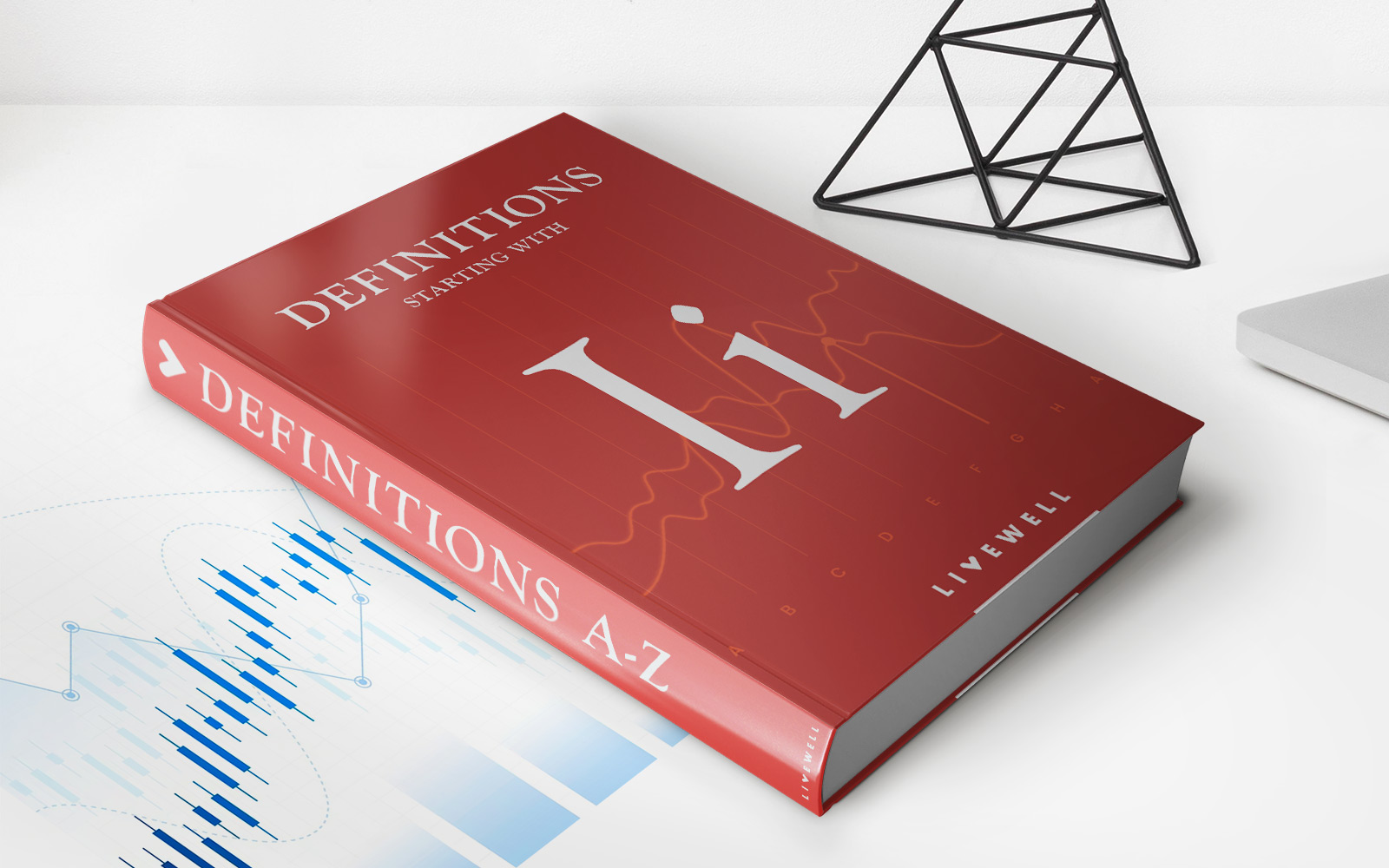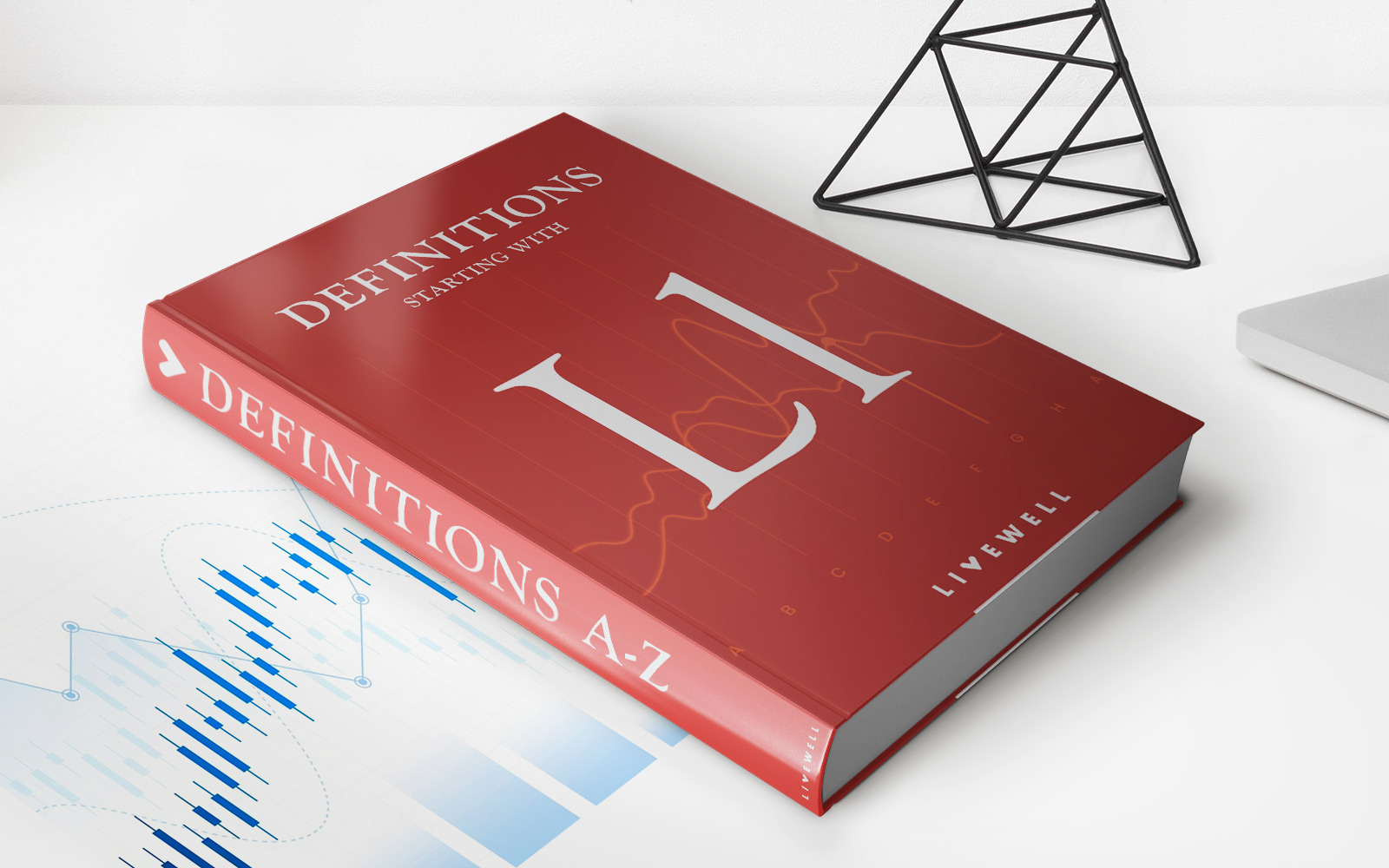Home>Finance>What Is Extended Insurance Sweep Deposit Account


Finance
What Is Extended Insurance Sweep Deposit Account
Published: November 13, 2023
Learn about the benefits of an extended insurance sweep deposit account in finance. Safeguard your funds while maximizing returns.
(Many of the links in this article redirect to a specific reviewed product. Your purchase of these products through affiliate links helps to generate commission for LiveWell, at no extra cost. Learn more)
Table of Contents
- Introduction
- Definition of Extended Insurance Sweep Deposit Account
- How Extended Insurance Sweep Deposit Account Works
- Advantages of Extended Insurance Sweep Deposit Account
- Disadvantages of Extended Insurance Sweep Deposit Account
- How to Open an Extended Insurance Sweep Deposit Account
- Comparison with Other Types of Bank Accounts
- Conclusion
Introduction
Welcome to the world of finance, where various banking products and services cater to the unique needs of individuals. One such product you may come across is the Extended Insurance Sweep Deposit Account. This article aims to provide a comprehensive understanding of what exactly this account is and how it functions.
As the name suggests, an Extended Insurance Sweep Deposit Account combines the advantages of multiple financial products into one convenient package. It offers the security of an insured deposit account, along with the potential for higher interest rates and the convenience of automated transfers.
This account is typically provided by banks or financial institutions and is designed to maximize the amount of FDIC insurance coverage on a customer’s deposits. By automatically transferring funds in excess of the insurance limit to different accounts, it ensures that all deposits remain fully insured.
The concept behind an Extended Insurance Sweep Deposit Account is to mitigate the risk of loss for customers while optimizing the return on their deposits. It achieves this by strategically allocating funds among different accounts to make the most of the available insurance coverage for each individual depositor.
In the next sections, we will explore how an Extended Insurance Sweep Deposit Account works, its advantages and disadvantages, how to open one, and how it compares to other types of bank accounts. Let’s delve into the intricacies of this financial product and gain a deeper understanding of its benefits and potential drawbacks.
Definition of Extended Insurance Sweep Deposit Account
An Extended Insurance Sweep Deposit Account, also known as EISDA, is a bank account that helps customers maximize their FDIC insurance coverage on their deposits. It is a specialized type of account that automatically sweeps funds in excess of the insurance limit into different accounts, ensuring that all deposits remain fully insured.
In essence, an EISDA combines the features of a traditional deposit account with the benefits of extended insurance coverage. It is structured in a way that allows customers to have peace of mind knowing that their deposits are protected while potentially earning higher interest rates.
When a customer opens an EISDA, the bank automatically divides their deposits into smaller amounts and spreads them across multiple accounts. These accounts are typically held at the same bank or affiliated partner banks, allowing for seamless transfers without inconveniencing the customer.
The main objective of an EISDA is to provide maximum deposit insurance coverage for individual customers. The Federal Deposit Insurance Corporation (FDIC) insures deposits up to $250,000 per depositor, per insured bank. With an EISDA, the bank automatically allocates funds to different accounts to ensure that no amount exceeds the insurance limit.
For example, let’s say a customer has $500,000 in deposits and opens an EISDA. The bank may allocate $250,000 to a checking account, $250,000 to a savings account, and enhance each account’s interest rate to attract deposits. If the customer deposits an additional $50,000, the bank may sweep $50,000 from the checking account into a money market account to maintain full insurance coverage.
By utilizing an EISDA, customers can benefit from two main advantages. Firstly, they can enjoy the peace of mind that comes with knowing their deposits are fully insured, even if they exceed the standard insurance limit. Secondly, they have the potential to earn higher interest rates compared to a traditional savings account, as the bank may offer premium rates on the extended portion of their deposits.
In the next section, we will explore how an Extended Insurance Sweep Deposit Account works in more detail, including the mechanisms behind the automated fund transfers and the advantages it offers to depositors.
How Extended Insurance Sweep Deposit Account Works
The operational mechanics of an Extended Insurance Sweep Deposit Account (EISDA) are what make it unique and valuable to depositors. This section will delve into the inner workings of how an EISDA functions and the steps involved in its operation.
When a customer opens an EISDA, the bank automatically divides their deposits into smaller amounts and allocates them across multiple accounts. These accounts are typically held at the same bank or affiliated partner banks, allowing for seamless transfers and management.
Initially, the bank determines the amount of the deposit that exceeds the stipulated FDIC insurance limit, which is currently set at $250,000 per depositor, per insured bank. The excess amount is then swept into additional accounts to ensure full insurance coverage.
The specific allocation of funds in an EISDA may vary depending on the bank’s policies and the depositor’s preferences. Some common types of accounts that may be involved in the sweep process include savings accounts, money market accounts, certificates of deposit (CDs), or even eligible investments.
Triggered by pre-determined thresholds or certain rules, the automated sweep mechanism ensures that any deposit exceeding the insurance limit is promptly moved into other accounts. For example, if a customer’s balance in the primary account exceeds the threshold, the excess funds will be swept into a secondary account.
The frequency of the sweep process may also vary, with some banks conducting daily sweeps while others perform them on a less frequent basis. However, it is worth noting that the customer’s access to the swept funds remains unhindered, allowing for easy liquidity and flexibility.
In addition to maximizing deposit insurance coverage, an EISDA may offer depositors certain benefits. For instance, deposits in the extended portion of the account may earn a higher interest rate compared to a regular savings account. This serves as a potential incentive for customers to open an EISDA and maintain their deposits in an optimized manner.
It is crucial for depositors to understand that an EISDA is not a separate type of account but rather a structure that combines multiple accounts to provide extended insurance coverage. This means that customers will receive separate account statements for each account involved in the sweep process, allowing for clear visibility of their deposits.
Overall, an Extended Insurance Sweep Deposit Account offers depositors a convenient and efficient way to maximize deposit insurance coverage. By employing automated transfers and allocation of funds, customers can enjoy the benefits of enhanced security, potentially higher interest rates, and seamless management of their deposits.
In the following sections, we will explore the advantages and disadvantages of an EISDA, as well as the requirements and steps to open one.
Advantages of Extended Insurance Sweep Deposit Account
An Extended Insurance Sweep Deposit Account (EISDA) offers several advantages to depositors. Understanding these benefits can help individuals make informed decisions about their banking needs and how to maximize the safety and potential returns on their deposits. Let’s explore the advantages of an EISDA in more detail.
1. Increased FDIC Insurance Coverage: One of the primary advantages of an EISDA is the ability to maximize FDIC insurance coverage. The Federal Deposit Insurance Corporation (FDIC) insures deposits up to $250,000 per depositor, per insured bank. With an EISDA, the bank automatically divides deposits into smaller amounts and allocates them across multiple accounts, ensuring that all funds remain fully insured. This provides peace of mind and protection for depositors, especially those with high deposit amounts.
2. Potential Higher Interest Rates: In addition to enhanced insurance coverage, an EISDA may offer the potential to earn higher interest rates. Banks may offer premium rates on the extended portion of the deposits, providing depositors with the opportunity to maximize their returns. This makes an EISDA an attractive option for individuals who want to earn competitive interest rates on their excess funds while keeping them fully insured.
3. Convenience and Ease of Management: An EISDA streamlines the management of deposits by automatically allocating funds across multiple accounts. Deposit transfers are typically seamless and can be done without any action required by the depositor. This offers convenience and reduces the need for manual monitoring or transferring of funds between different accounts.
4. Enhanced Liquidity and Accessibility: With an EISDA, depositors have easy access to their funds. The sweep mechanism does not restrict access to the swept funds, allowing for immediate liquidity when needed. Deposit transfers do not involve any delay or penalties, ensuring that the deposited funds are readily available for withdrawal or other financial needs.
5. Customizable Allocation and Preferences: While an EISDA follows a predetermined allocation process, depositors often have some flexibility in selecting the accounts involved in the sweep process. This allows individuals to align their preferences with the types of accounts they want their funds allocated to. For example, a depositor may choose to allocate funds to a high-yield savings account, a money market account, or other eligible investments based on their financial goals or risk appetite.
6. Consolidation of Banking Relationships: An EISDA offered by a single bank or its affiliated partner banks allows depositors to consolidate their banking relationships. This simplifies the management of accounts and enables depositors to work with a trusted institution for all their banking needs. It also provides a comprehensive overview of deposits and statements, making it easier to monitor and track overall financial health.
By taking advantage of these benefits, depositors can optimize their funds, gain peace of mind, and potentially increase their returns. It is important to note that while an EISDA offers advantages, it is crucial for individuals to thoroughly review the terms and conditions, as well as the rates and fees associated with the specific account offered by the bank.
In the next section, we will explore the potential disadvantages that individuals should consider before opening an EISDA.
Disadvantages of Extended Insurance Sweep Deposit Account
While an Extended Insurance Sweep Deposit Account (EISDA) provides several advantages, it’s important to be aware of potential disadvantages. Understanding these drawbacks can help individuals make an informed decision about whether an EISDA aligns with their financial goals and needs. Let’s explore some of the potential disadvantages of an EISDA.
1. Limited Interest Rate Earnings: Although an EISDA may offer the potential for higher interest rates on the extended portion of deposits, the overall interest rate earned may still be lower compared to other investment options. Individuals seeking to maximize their returns may find alternative investment avenues more suitable, such as stocks, bonds, or mutual funds that potentially offer greater growth opportunities.
2. Allocation Restrictions: While an EISDA offers convenience in managing deposits, there may be limitations on the types of accounts to which the funds can be allocated. Deposit allocation may be restricted to specific accounts offered by the bank or its affiliated partners, limiting flexibility in choosing investment options that align with an individual’s financial goals and risk tolerance.
3. Complexity and Understanding: EISDAs can be complex in terms of how funds are allocated, how transfers occur, and the overall structure of the account. Not fully understanding the terms and mechanics of an EISDA can lead to confusion or unintended consequences. Individuals considering an EISDA should carefully review and comprehend the account terms, conditions, fees, and any potential risks associated with the account structure.
4. Potential Fees and Charges: Some EISDAs may have associated fees and charges. These could include account maintenance fees, transaction fees, or fees for additional services. Individuals must carefully review the fee structure to assess whether the potential benefits of an EISDA outweigh the costs, especially if there are alternative banking products available with more favorable fee structures.
5. Limitations on Insurance Coverage: While an EISDA aims to maximize FDIC insurance coverage, it’s important to note that the guarantee of up to $250,000 per depositor, per insured bank still applies. If a depositor has multiple accounts across different banks or holds accounts jointly with others, the overall insurance coverage may vary. Individuals with large deposit amounts and complex account structures should consult with their bank to understand the specific insurance coverage for their accounts.
6. Potential Changes in Bank Policies: The bank’s policies regarding EISDAs may change over time. This could result in modifications to the allocation process, interest rates, or fees. Individuals should periodically review their account terms and stay informed about any changes that may impact their EISDA to ensure it continues to meet their financial objectives.
It’s essential to thoroughly evaluate the advantages and disadvantages of an EISDA to determine whether it aligns with one’s financial goals and risk tolerance. Individuals may benefit from consulting with financial advisors to assess whether an EISDA is the right choice given their unique circumstances.
In the next section, we will explore the process of opening an Extended Insurance Sweep Deposit Account and the requirements involved.
How to Open an Extended Insurance Sweep Deposit Account
If you’re interested in opening an Extended Insurance Sweep Deposit Account (EISDA), you’ll need to follow certain steps and meet specific requirements. While the exact process may vary from bank to bank, the following provides a general overview of what to expect when opening an EISDA.
1. Research and Select a Bank: Start by researching different banks that offer EISDAs. Look for reputable institutions that align with your financial goals and preferences. Consider factors such as interest rates, account fees, customer service, and the bank’s track record.
2. Gather Required Documents: Once you’ve selected a bank, gather the necessary documents to open an account. These may include a valid identification document (such as a passport or driver’s license), proof of address (such as a utility bill), and your Social Security number or Tax Identification Number.
3. Contact the Bank: Reach out to the selected bank through their preferred communication channel. This could be via phone, email, or in-person at a local branch. Inquire about the availability of EISDAs and express your interest in opening an account.
4. Schedule an Appointment: Depending on the bank’s procedures, you may need to schedule an appointment to open an EISDA. This is especially true for in-person account openings. Alternatively, some banks may allow you to open an account online or through their mobile banking app.
5. Provide Required Information: During your appointment or online application process, you’ll need to provide personal information and complete the necessary account-opening forms. This typically includes your full name, contact details, date of birth, and social security number or tax identification number.
6. Fund Your Account: Once your account is approved and activated, you’ll need to deposit funds into the EISDA. The specific minimum deposit requirement will vary from bank to bank, so ensure you have the required funds available. You may be able to transfer funds from an existing bank account or deposit a check directly into your EISDA.
7. Understand the Terms and Conditions: It’s crucial to carefully read and understand the terms and conditions of your EISDA. Familiarize yourself with account fees, interest rates, withdrawal restrictions, and any specific rules governing the allocation and sweep process. Seek clarification from the bank on any aspects that you find unclear.
8. Monitor and Manage Your Account: Once your EISDA is open, regularly monitor your account activity and statements. Stay informed about any changes in the bank’s policies, fees, or interest rates. Regularly review your deposit allocation to ensure it aligns with your financial goals and risk tolerance.
Remember, it’s essential to choose a bank and account that best suits your needs. Conduct thorough research, compare offerings from different institutions, and seek guidance from financial advisors if needed.
In the next section, we will compare an EISDA with other types of bank accounts to provide a broader perspective on the available options.
Comparison with Other Types of Bank Accounts
When considering banking options, it’s essential to understand how an Extended Insurance Sweep Deposit Account (EISDA) compares to other types of bank accounts. Each account type has its own features and benefits, so let’s explore the key differences between an EISDA and other common bank accounts.
1. EISDA vs. Regular Checking Account: A regular checking account is the most basic type of account offered by banks. While it provides easy access to funds for everyday transactions, it typically does not offer high interest rates. In contrast, an EISDA aims to provide enhanced security and potential higher interest rates by optimizing deposit insurance coverage and allocating funds to different accounts to enable deposit growth.
2. EISDA vs. Savings Account: A traditional savings account allows individuals to set aside money and earn interest. While it offers moderate interest rates, it may not provide the potential for higher returns compared to an EISDA. However, a savings account may have fewer restrictions on withdrawals compared to an EISDA, which may be subject to certain limitations due to the automated sweep process.
3. EISDA vs. Money Market Account: A money market account offers higher interest rates than a regular savings account, making it an attractive option for depositors seeking growth and liquidity. However, an EISDA may offer a more convenient and automated approach to maximizing deposit insurance coverage, which is a key distinguishing factor. Money market accounts may also have tiered interest rates based on deposit amounts, whereas an EISDA primarily focuses on maximizing insurance coverage rather than rate tiers.
4. EISDA vs. Certificate of Deposit (CD): A CD is a time-based deposit account with a fixed term and a fixed interest rate. It offers higher interest rates than most other bank accounts, but funds are generally locked in for the duration of the CD term. In contrast, an EISDA provides more flexibility in terms of accessibility to deposited funds while optimizing deposit insurance coverage. However, an EISDA may not offer the same competitive interest rates as a CD, especially for longer-term CDs.
5. EISDA vs. High-Yield Savings Account: A high-yield savings account typically provides higher interest rates compared to regular savings accounts. It focuses on maximizing interest earnings, but it may not have the same emphasis on optimizing deposit insurance coverage as an EISDA. High-yield savings accounts may also have certain requirements, such as maintaining a minimum balance or meeting specific transaction criteria, while an EISDA usually focuses on maintaining full deposit insurance coverage above interest rate optimization.
Comparing different bank accounts will help individuals determine which best suits their financial goals and needs. An EISDA offers a unique combination of enhanced deposit insurance coverage, potential higher interest rates, and seamless management of deposits. However, individuals should assess their risk tolerance, liquidity needs, and desired returns to decide whether an EISDA is the right choice for them.
In the final section, we will conclude the article and summarize the key points discussed.
Conclusion
In conclusion, an Extended Insurance Sweep Deposit Account (EISDA) is a specialized banking product designed to maximize FDIC insurance coverage on deposits while potentially offering higher interest rates. Through automated sweeps and allocation of funds across various accounts, an EISDA ensures that all deposits remain fully insured, providing peace of mind for depositors.
Opening an EISDA involves researching and selecting a suitable bank, gathering the required documentation, and completing the necessary account-opening procedures. Once the account is active, depositors can enjoy the advantages of increased insurance coverage, potential higher interest rates, convenience in managing funds, enhanced liquidity, and customizable allocation preferences.
However, it’s important to consider the potential disadvantages of an EISDA, such as limited interest rate earnings, allocation restrictions, complexity, potential fees, and limitations on insurance coverage. Individuals should carefully evaluate whether an EISDA aligns with their financial goals and risk tolerance before opening an account.
Comparing an EISDA to other types of bank accounts, such as regular checking accounts, savings accounts, money market accounts, CDs, and high-yield savings accounts, allows individuals to assess the key differences and determine the best option for their needs.
When considering an EISDA or any other type of bank account, it’s crucial to review the account terms and conditions, understand the associated fees, stay informed about any changes in policies, and regularly monitor the account activity.
Ultimately, choosing an EISDA requires careful consideration and understanding of its benefits and potential drawbacks. By making an informed decision, depositors can maximize their deposit insurance coverage, potentially earn higher returns, and enjoy the convenience and peace of mind that come with an Extended Insurance Sweep Deposit Account.
Always consult with financial advisors or banking professionals to gain further insights and assistance in selecting the best banking options to meet your individual financial goals and objectives.


